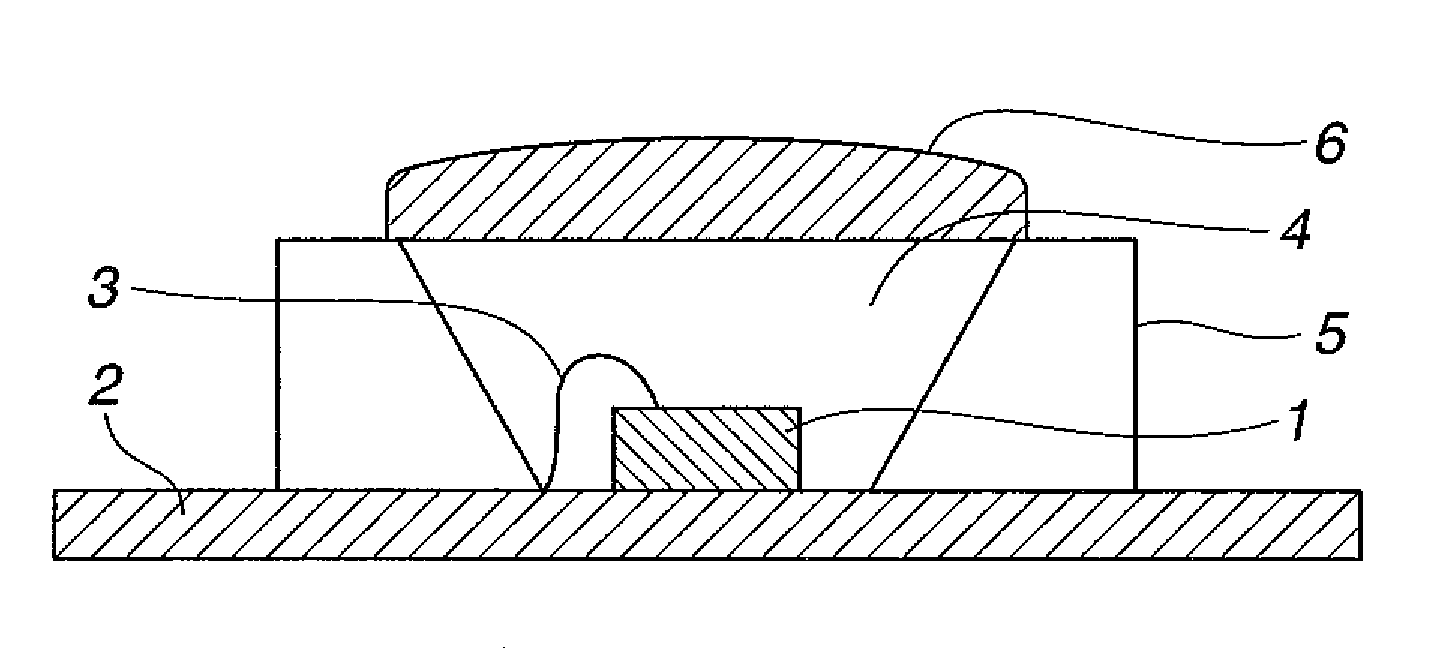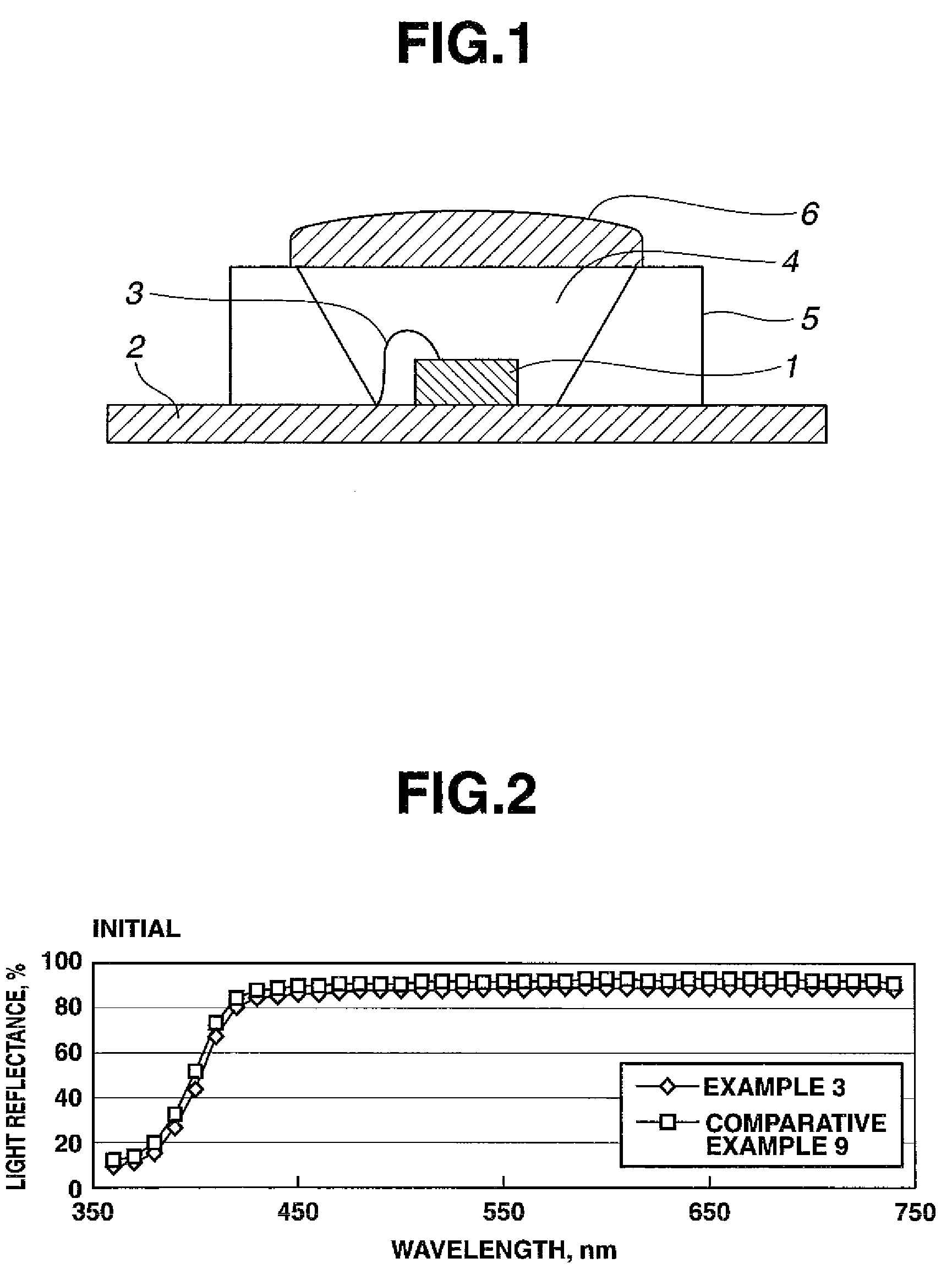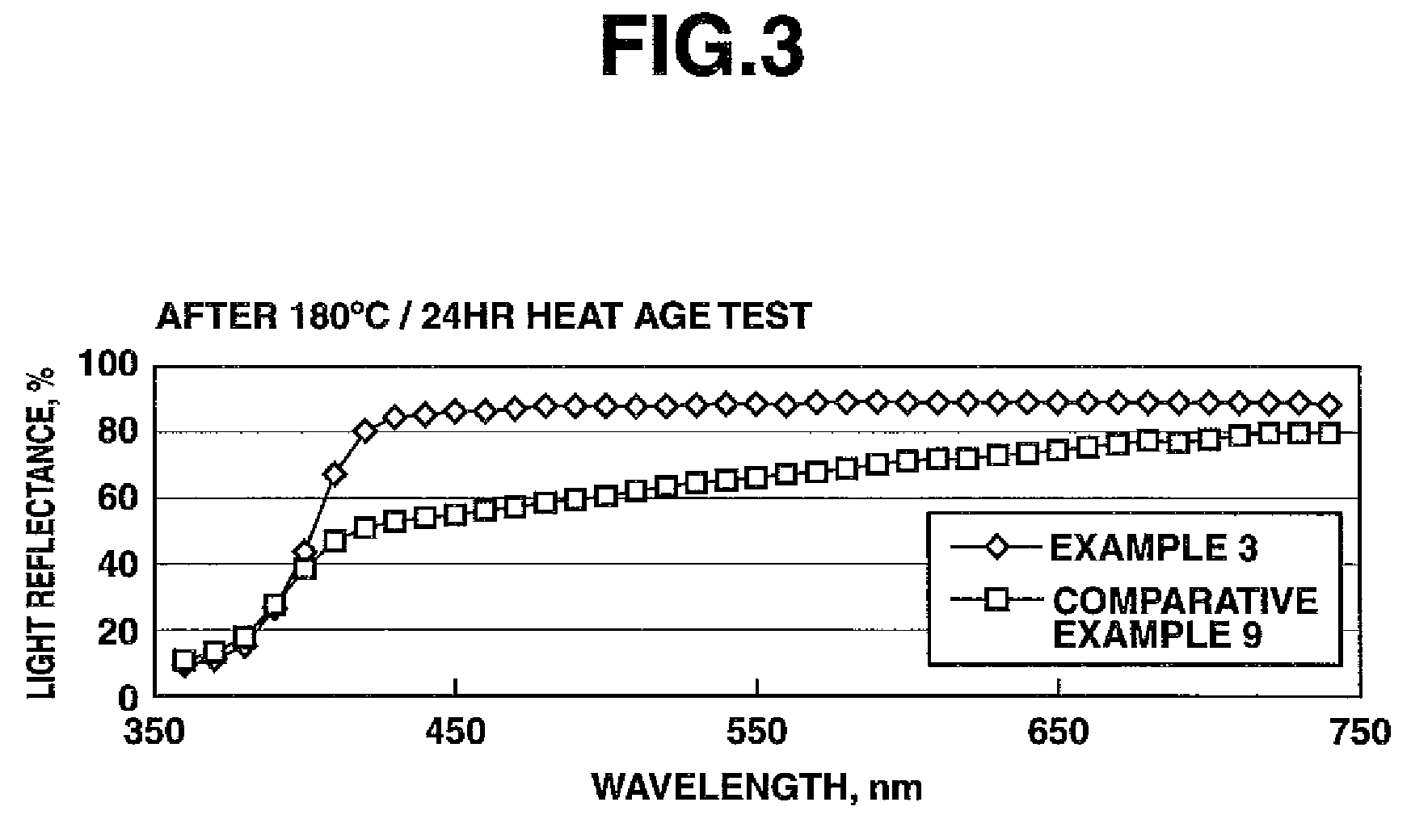White heat-curable silicone resin composition, optoelectronic part case, and molding method
a technology of silicone resin and composition, applied in the field of white heatcurable silicone resin composition, optoelectronic part case, molding method, can solve the problems of reducing mechanical strength, encapsulant and case degradation, and none of these patents can solve the problem of yellowing in long-term, and achieve the effect of minimising yellowing
- Summary
- Abstract
- Description
- Claims
- Application Information
AI Technical Summary
Benefits of technology
Problems solved by technology
Method used
Image
Examples
synthesis example 1
[0068]A 1-L flask was charged with 100 parts of methyltrichlorosilane and 200 parts of toluene. Under ice cooling, a mixture of 8 parts of water and 60 parts of isopropyl alcohol was added dropwise over 5 to 20 hours while maintaining an internal temperature between −5° C. and 0° C. The reaction mixture was then heated and stirred at the reflux temperature for 20 minutes. The reaction mixture was cooled to room temperature, after which 12 parts of water was added dropwise below 30° C. over 30 minutes, followed by 20 minutes of stirring. Further 25 parts of water was added dropwise, after which the mixture was stirred at 40-45° C. for 60 minutes. Thereafter, 200 parts of water was added whereupon the organic layer was separated. The organic layer was washed until neutral. This was followed by azeotropic dehydration, filtration and vacuum stripping, yielding 36.0 parts of a heat-curable organopolysiloxane (A-1) having the following formula (5) as a colorless transparent solid (m.p. 76...
synthesis example 2
[0069]A 1-L flask was charged with 50 parts of methyltrichlorosilane, 70.6 parts of phenyltrichlorosilane, and 200 parts of toluene. Under ice cooling, a mixture of 8 parts of water and 60 parts of methyl alcohol was added dropwise over 5 to 20 hours while maintaining an internal temperature between −5° C. and 0° C. The reaction mixture was then heated and stirred at the reflux temperature for 20 minutes. The reaction mixture was cooled to room temperature, after which 12 parts of water was added dropwise below 30° C. over 30 minutes, followed by 20 minutes of stirring. Further 25 parts of water was added dropwise, after which the mixture was stirred at 40-45° C. for 60 minutes. Thereafter, 200 parts of water was added whereupon the organic layer was separated. The organic layer was washed until neutral. This was followed by azeotropic dehydration, filtration and vacuum stripping, yielding 45.0 parts of a heat-curable organopolysiloxane (A-2) having the following formula (6) as a co...
examples 1 to 6
, Comparative Examples 1 to 6
[0085]White silicone resin compositions were prepared by blending (A) heat-curable organopolysiloxane, (B) white pigment, (C) inorganic filler, and (D) curing catalyst in accordance with the formulation shown in Table 1, melting and mixing the mixture on a hot two-roll mill until uniform, cooling and grinding.
[0086]These compositions were examined for various properties by the following tests, with the results shown in Table 1, In all runs, the compositions were molded on a transfer molding machine.
[0087]The spiral flow was measured by molding the composition at 175° C. and 6.9 N / mm2 for 120 seconds in a mold in accordance with EMMI standards. The rating “full flow” means that the composition flowed beyond the measurement limit of the mold.
[0088]The composition was thinly spread on a hot plate at 175° C. and scraped off with a spatula. The gel time was measured as the time when the resin remained scrapable off from the hot plate.
Flexur...
PUM
| Property | Measurement | Unit |
|---|---|---|
| light reflectance | aaaaa | aaaaa |
| temperature | aaaaa | aaaaa |
| melting point | aaaaa | aaaaa |
Abstract
Description
Claims
Application Information
 Login to View More
Login to View More - R&D
- Intellectual Property
- Life Sciences
- Materials
- Tech Scout
- Unparalleled Data Quality
- Higher Quality Content
- 60% Fewer Hallucinations
Browse by: Latest US Patents, China's latest patents, Technical Efficacy Thesaurus, Application Domain, Technology Topic, Popular Technical Reports.
© 2025 PatSnap. All rights reserved.Legal|Privacy policy|Modern Slavery Act Transparency Statement|Sitemap|About US| Contact US: help@patsnap.com



